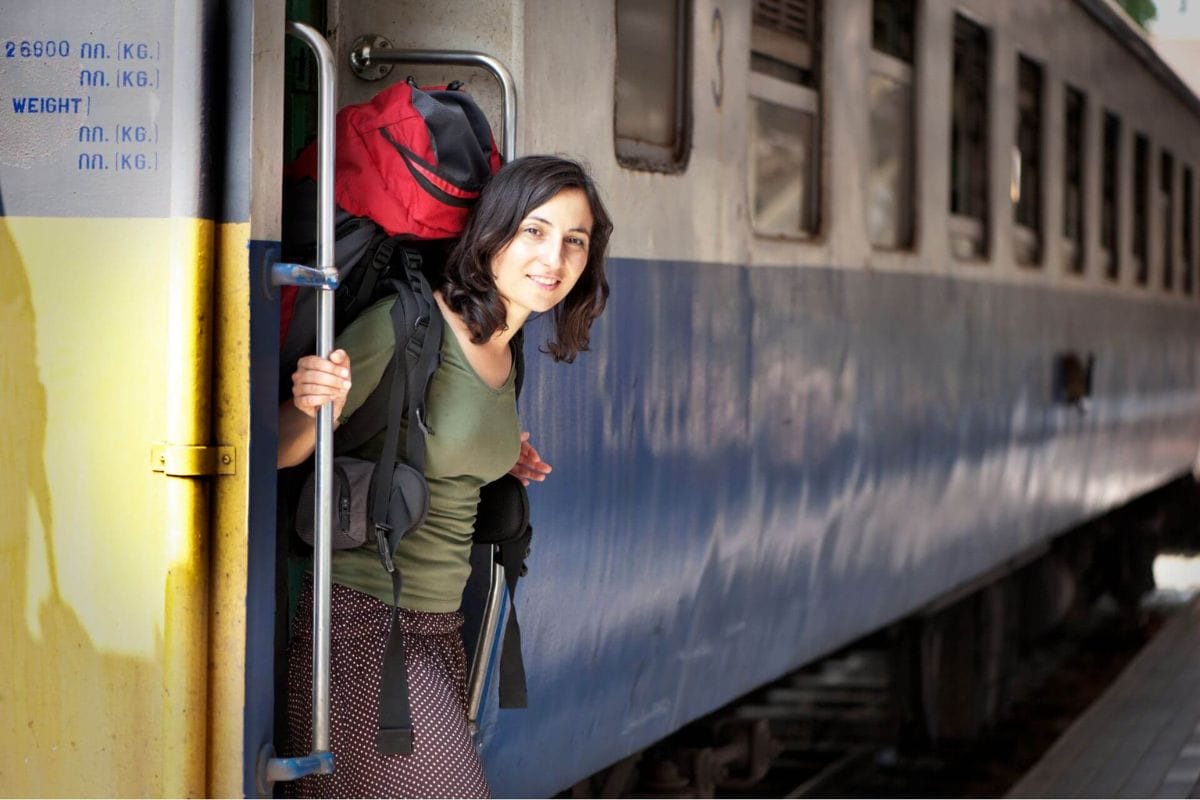The Beginner’s Guide to Train Travel in Europe
Traveling through Europe by train is convenient, eco-friendly, and offers breathtaking scenery. Start by creating a detailed itinerary and booking popular routes in advance. Use national operator websites or third-party sites for ticket purchases. When moving through stations, check departure boards and stay alert for pickpockets. Onboard, secure your luggage and enjoy the amenities. A Eurail Pass provides unlimited travel across multiple countries and is a cost-effective option. Stay safe by securing valuables and knowing emergency procedures. With these tips, you’ll be well-prepared to commence on an unforgettable European train adventure.
Advantages of Train Travel
One of the key advantages of train travel in Europe is the convenience of arriving and departing from city centers. This means you won’t have to deal with the hassle of transportation to and from remote airports. You step off the train and you’re already in the heart of the city, ready to explore.
Another benefit is the absence of long check-in and security lines. Unlike air travel, boarding a train is quick and hassle-free. You simply arrive at the station, find your platform, and board. It’s a smooth process that saves you precious time.
European trains also offer more flexibility with luggage. There are typically no limits or fees, so you can bring along what you need without worrying about extra costs or restrictions. This is a huge plus for travelers who like to pack a bit more.
E-tickets make the experience even more seamless. You can book your tickets online and have them on your phone, eliminating the need for paper tickets. It’s a convenient and eco-friendly option.
Planning Your Trip
Planning a European train journey demands careful preparation to guarantee a seamless and memorable experience. Start by creating a detailed itinerary that includes your must-visit destinations. Consider incorporating scenic routes like the Glacier Express or the GoldenPass Line to elevate your travel experience with breathtaking views.
Efficient train connections are important. Research how to smoothly move between different cities. Utilise online resources like seat61.com and national railway websites for route planning. This ensures you’re aware of the best routes and train schedules, helping you optimise your trip and avoid unnecessary layovers.
While planning, factor in time for exploring city centers and attractions near major train stations. Many European cities have central stations with easy access to top sights, allowing you to make the most of your time.
Lastly, always have a backup plan. Delays or cancellations can occur, so knowing alternative routes or nearby attractions can save the day.
Buying Train Tickets
After mapping out your itinerary, the next step is securing your train tickets to guarantee a smooth journey across Europe. Start by visiting the websites of national train operators or specialised retailers for your specific routes. Booking directly can sometimes offer the best fares and more options.
For high-speed trains or popular routes, it’s wise to book in advance. Early booking often means lower fares and better seat availability. If your trip involves multiple operators, third-party booking sites like Raileurope.com or thetrainline.com can simplify the process, offering a one-stop-shop for your ticketing needs.
When purchasing, pay attention to fare types. Fixed-price tickets usually stay the same regardless of when you buy, while variable-price tickets fluctuate based on demand. Comparing these can save you money.
Don’t forget to check the ticket collection methods. Many services offer electronic tickets, which can be stored on your phone, or print-at-home options. Some tickets might require station pickup, so make sure you know how and where to collect them to avoid last-minute issues.
Navigating Stations
Getting around European train stations can be straightforward if you know where to look and what to expect. Train stations often have multiple platforms, so start by checking the departure boards for your train’s platform number. These boards are usually electronic and prominently displayed in central areas of the station.
Look out for signs indicating amenities like restrooms, food vendors, ticket counters, and waiting areas. These signs are typically in multiple languages and use universal symbols, making them easy to understand. If you need to purchase tickets, automated ticket machines are widely available and accept both cash and cards.
Be mindful of pickpockets and scams while you’re in the station. Keep your belongings secure, especially in crowded areas like waiting rooms and near the departure boards. It’s always a good idea to keep your bags in front of you and stay aware of your surroundings.
Train station layouts can vary significantly, so it’s helpful to arrive early. Use this extra time to study station maps and familiarise yourself with the layout. If you’re unsure about anything, don’t hesitate to ask station staff for assistance; they’re usually quite helpful.
Onboard Tips
Once you’ve navigated the station, it’s time to settle into your train journey by familiarising yourself with the onboard amenities. Trains in Europe often offer wifi, refreshments, and comfortable seating options, making your travel experience more enjoyable.
First and foremost, make sure your ticket is validated, especially if you’re traveling on regional trains. Find your designated seat, and store your luggage securely to avoid any inconvenience during the journey. Interacting with conductors and border patrol officials is essential. Always be polite and comply with any instructions or requests they may have.
To guarantee a smooth and pleasant journey, keep these onboard tips in mind:
- Amenities Check: Take advantage of the available amenities. Look for wifi options, snack bars, or dining cars to enhance your travel experience.
- Luggage Security: Store your luggage in designated areas and keep an eye on it to prevent theft or loss.
- Respect Quiet Zones: Follow any specific rules for quiet zones and be considerate of fellow passengers to maintain a peaceful environment.
- Scenic Views: Enjoy the stunning European countryside views. Sit back, relax, and take in the breathtaking landscapes.
Popular Routes
Exploring Europe’s popular train routes offers a unique way to experience the continent’s diverse landscapes and rich history. Start with the Glacier Express in Switzerland, an eight-hour journey offering panoramic views of the Swiss Alps. It’s a feast for the eyes as you traverse through snow-capped mountains and charming alpine villages.
Next, consider the Venice Simplon-Orient-Express, a luxury route that takes you back to the golden age of travel. With vintage carriages and gourmet dining, this journey is more than just a trip—it’s an experience in itself.
For those seeking dramatic scenery, the Flam Railway in Norway shouldn’t be missed. Known as one of the steepest standard-gauge railway lines globally, it offers breathtaking views of mountains and waterfalls.
The GoldenPass Line in Switzerland connects Montreux to Lucerne, passing through picturesque villages, vineyards, and lakes. It’s perfect for soaking in the quintessential Swiss landscape.
Lastly, the West Highland Line in Scotland offers stunning views of lochs, mountains, and moors. It’s a must for train enthusiasts and nature lovers alike, providing an unforgettable glimpse into Scotland’s rugged beauty.
These routes showcase Europe’s diverse landscapes and rich cultural heritage, making train travel an unparalleled experience.
Using Eurail Passes
Traveling Europe by train becomes incredibly convenient and flexible with a Eurail Pass, allowing you to explore multiple countries seamlessly. This pass provides unlimited train travel across participating countries for a set duration, making it a cost-effective option for extensive travel.
Here’s how you can make the most of your Eurail Pass:
- Choose the Right Pass: Eurail offers various options like the Global Pass, which covers 33 countries, the Select Pass for 2-4 neighboring countries, and the One Country Pass, perfect for in-depth exploration of a single nation.
- Maximise Benefits: Beyond train travel, Eurail Passholders get discounts on ferries, buses, and attractions. This can save you extra money and enhance your travel experience.
- Plan Your Route: While the pass offers flexibility, planning your route can help you make the most of your time. Use the Eurail timetable and app to check train schedules and reservations.
- Understand Reservation Requirements: Some trains, especially high-speed and night trains, require reservations even if you have a Eurail Pass. Book these in advance to avoid additional charges or fully booked trains.
Using a Eurail Pass can transform your European adventure, making it more affordable and less stressful.
Safety Tips
When traveling by train in Europe, keeping your belongings secure and staying vigilant can help guarantee a safe journey. Start by using luggage locks to secure your bags and always keep your valuables close to you. A small bag or money belt for passports, credit cards, and cash can be very important.
Familiarise yourself with the train’s emergency procedures. Know where the emergency exits and safety equipment are located. This knowledge can be essential in an unexpected situation.
Be aware of your surroundings, especially in crowded areas like train stations. Pickpockets and scams are common, so stay alert and cautious. Keep a firm grip on your belongings and don’t let anyone distract you.
Respect the quiet zones on trains. These areas are designated for passengers who seek a peaceful journey, so keep noise to a minimum to avoid disturbances.
Follow all onboard rules and guidelines. If your seat requires a reservation, make sure you have one, and store your luggage in the designated areas to keep aisles clear.
Frequently Asked Questions
Is There a Train That Takes You All Around Europe?
There isn’t a single train that takes you all around Europe. However, with the Eurail Global Pass, you can travel across 33 countries, using a network of trains, including high-speed and scenic routes.
Is It Easy to Travel Around Europe by Train?
Yes, it’s easy to travel around Europe by train. You’ll find an extensive rail network, high-speed trains, and centrally located stations. Enjoy scenic routes and various service classes to fit your comfort and budget.
How Early Do You Need to Get to the Train Station in Europe?
You should arrive at the train station at least 30 minutes before a domestic train and 45-60 minutes before an international train. Major stations can be busy, so additional time helps guarantee a smooth check-in and boarding process.
Can You Hop on and Hop off Trains in Europe?
You usually can’t hop on and off trains in Europe with regular tickets. Flexible passes like Eurail or Interrail offer more freedom. Always check your ticket’s terms to see if spontaneous stops are allowed.
Conclusion
Train travel in Europe offers a unique and enjoyable way to explore the continent. With careful planning, the right tickets, and a bit of know-how, you’ll navigate stations and routes like a pro.
Embrace the journey, take in the scenic views, and enjoy the convenience and comfort trains provide. Whether you’re using a Eurail Pass or purchasing individual tickets, safety and preparedness are key.
Now, pack your bags and commence on an unforgettable European adventure!







